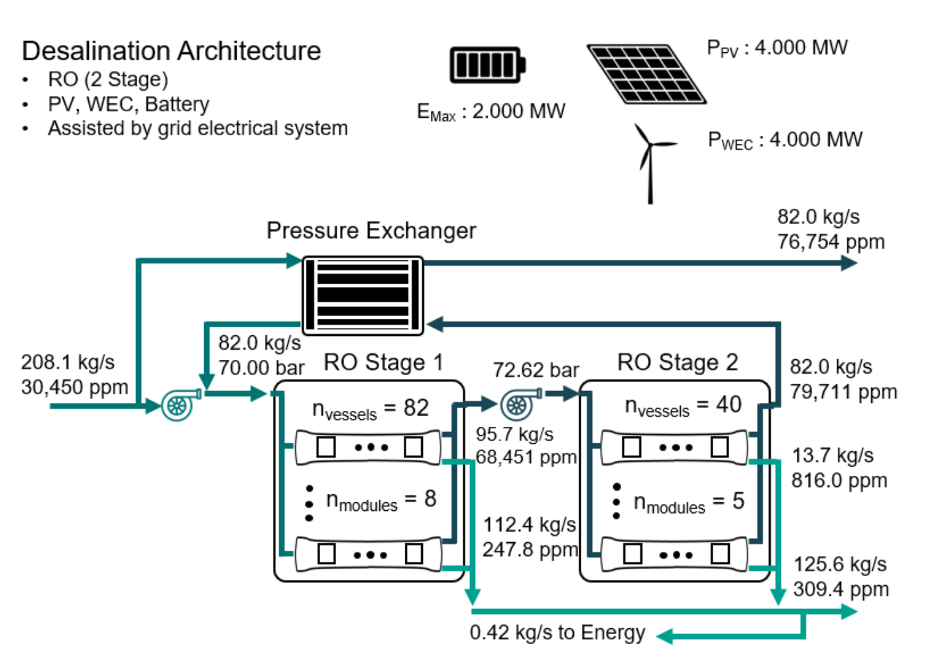As growing global water demand impacts uncertain water supplies, clean and efficient desalination systems are needed to provide resiliency to vulnerable populations. While much research has been done to improve desalination technologies, incorporating the complete desalination architecture, which includes the energy subsystems, has not been done. Inefficiencies that exist independently within the desalting systems and the energy subsystems are often compounded when the two systems are integrated.
The expansive design space of desalination architectures needs a systematic framework to promote optimal system selection based on quantitative multi-attribute performance.
Modeling framework enables optimized integration of both desalination architectures and their energy subsystems
This innovative new framework integrates desalination and energy subsystem design within a single modeling environment. This platform enables better decision making by simultaneously incorporating multiple attributes of both systems for the selection of the most optimized complete desalination architecture.
Rather than relying on the typical cost-dominant selection criteria, the framework enables planners to quantify the trade-offs of multiple components in order to identify new, exceptionally competitive designs across all performance attributes. With a focus on renewable energy source (RES) subsystems, complete desalination architectures can be identified that are cheaper, cleaner, and more water efficient than their conventional counterparts. For example, dramatic improvements to greenhouse gas emissions and water efficiency have been demonstrated by identifying system selections that may be purchased at modest price increases over lower cost alternatives.
This framework is comprehensive, transparent, reproducible, and is the first of its kind for seawater desalination architectures.
- Comprehensive: Incorporate and simultaneously compare attributes of multiple types of both desalting systems and energy subsystems.
- Lower cost: Assess parameters that impact overall cost to discover complete architectures that would not have been discoverable using traditional methods.
- Environmentally friendly: Focus on renewable energy subsystems such as solar, wind, geothermal, hydroelectric, and others to create complete desalination architectures that are cleaner and more water efficient than their conventional counterparts.
- Improved performance: Optimize desalting and energy subsystem evaluation to produce unprecedented designs that outperform those identified using traditional efforts.
- For use in identifying optimal desalination system architectures that include energy subsystems and are cheaper, cleaner, and more efficient.
![Basic optimization structure for evaluating complete desalination architectures Input variables and constraints including location, required water quality and quantity. Define objective function Min F(x) = f[f1(x), …fn(x)]. Select starting desalting subsystem design. Evaluate design. Object function minimized? Yes: Optimal desalting](/sites/default/files/2023-04/9055_gtr-0296-lst_image1.png)
Basic optimization structure for evaluating complete desalination architectures

Example diagram of optimal architecture based on selected attributes
